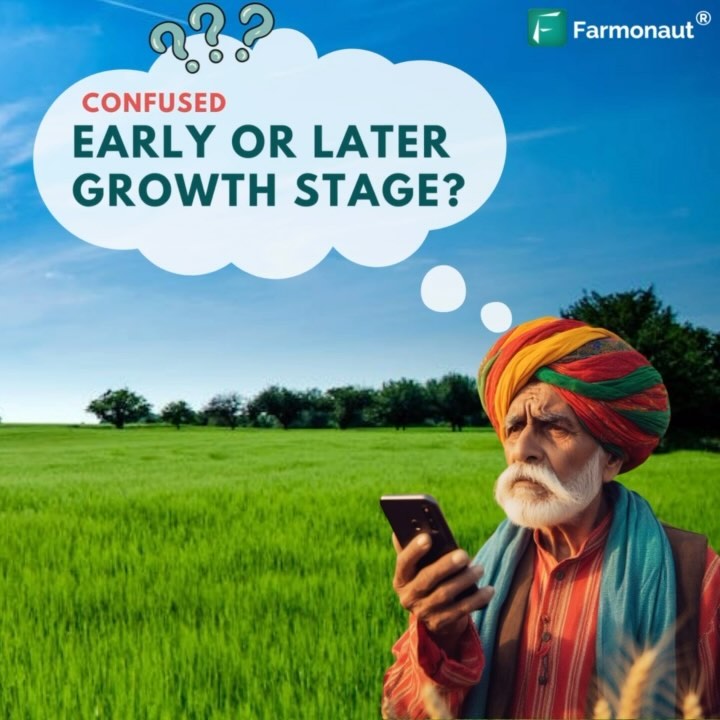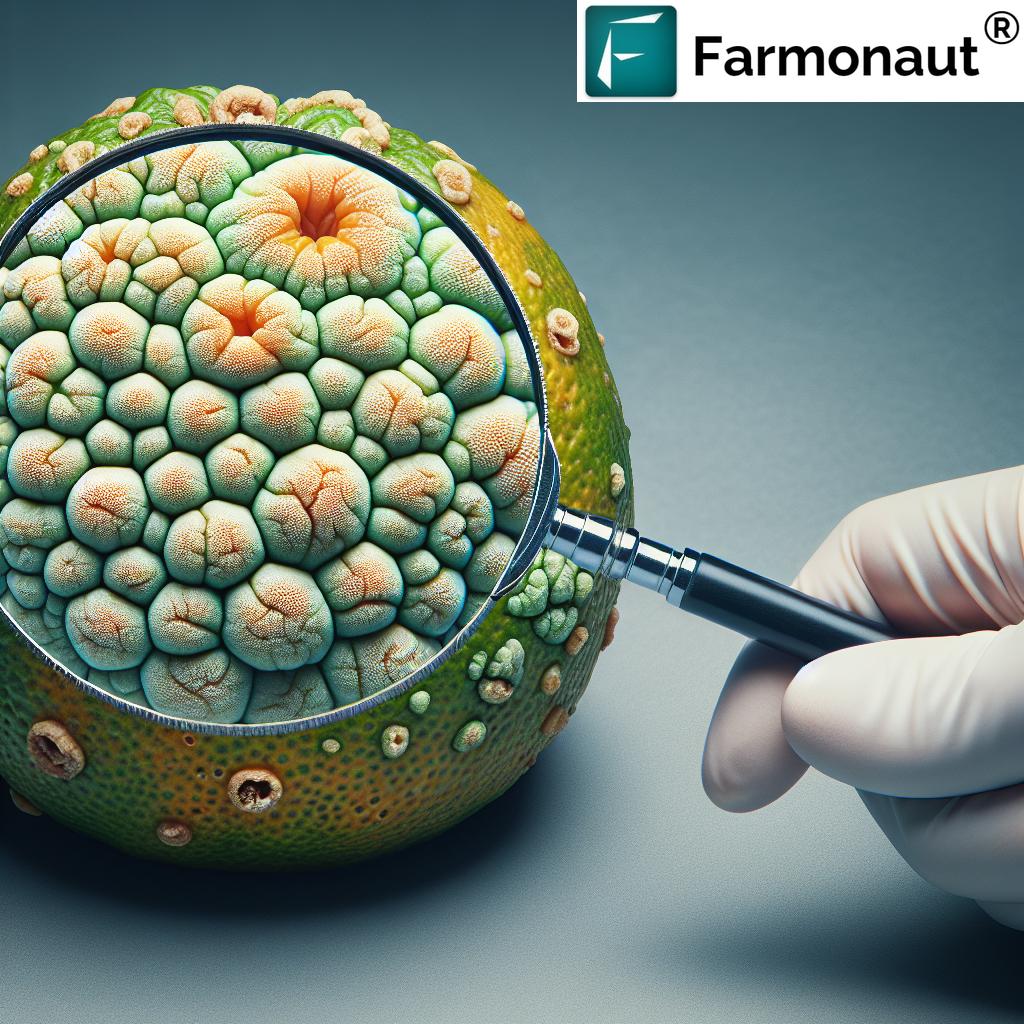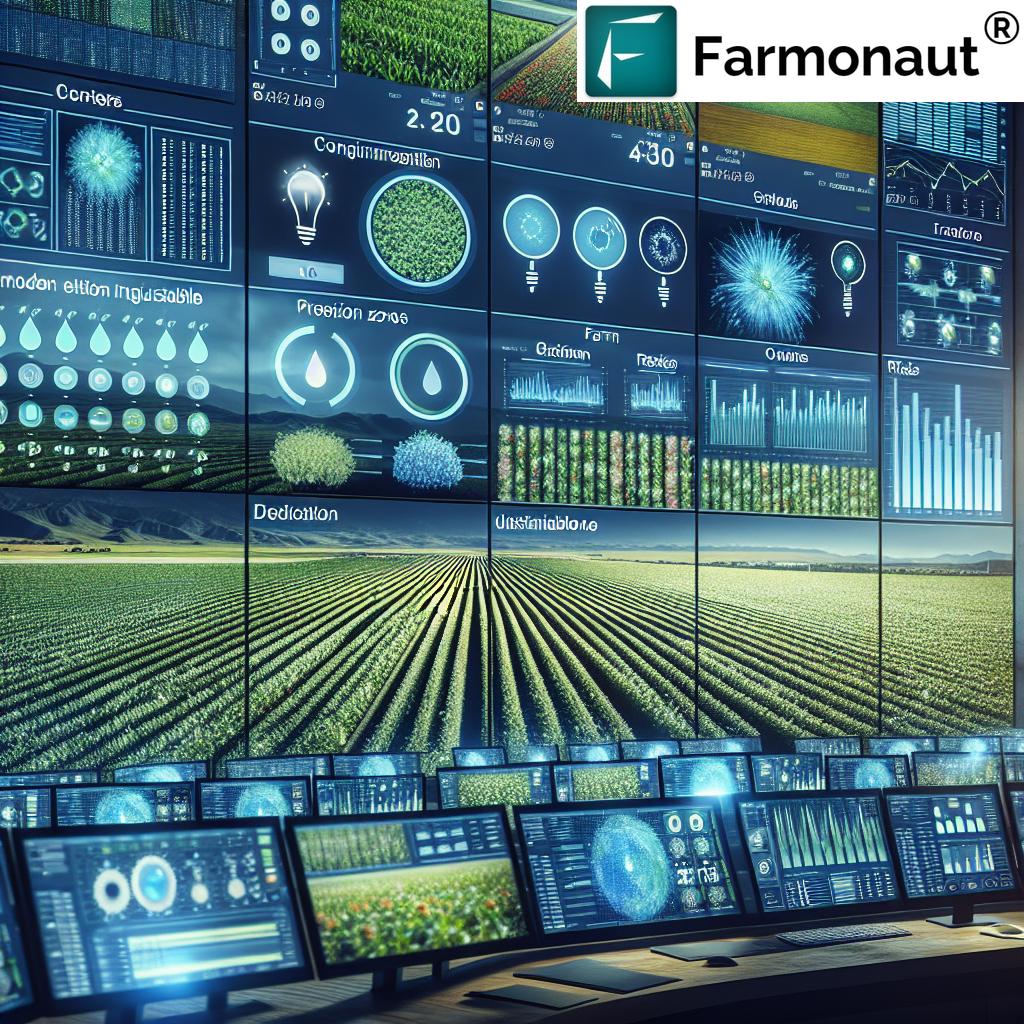Ag Tech Fertilizer & Fertilizer Robot: Top 7 Innovations Powering a Sustainable Farming Revolution in 2025
“By 2025, over 45% of large farms are projected to adopt robotic fertilizer applicators for precision nutrient management.”
Introduction: The Ag Tech Fertilizer Revolution for 2025
The advanced integration of ag tech fertilizers and fertilizer robots is fundamentally transforming agriculture in 2025. As food demand continues to escalate worldwide amid growing climate and resource constraints, precision and data-driven technologies are leading a new era in farming. Rather than relying on outdated methods of blanket chemical applications, today’s farmers have access to advanced systems that optimize nutrient application, reduce wastage, and substantially minimize environmental impacts.
In this blog, we explore the top 7 ag tech fertilizer and fertilizer robot innovations at the forefront of the 2025 revolution. We’ll show how these innovations are enabling sustainable, efficient, and productive farming for a rapidly changing global landscape.
Why Focused Innovation Now?
Ag tech fertilizers and robots help address our planet’s most critical food challenges, including greenhouse gas emissions, declining soil health, and the ever-tightening need for resource efficiency. From nanotechnology-enhanced formulations to AI-powered micro-robotic systems, the coming years will see agriculture transformed beyond anything seen in the past.
Why Ag Tech Fertilizer & Robot Innovations Are Critical in 2025
Traditional fertilizers in agriculture have brought both growth and challenges. Historically, chemical fertilizers enabled us to meet global food demand, yet their inefficiencies often led to significant wastage, runoff-induced environmental pollution, and serious impacts such as eutrophication and greenhouse gas emissions. The coming decade demands a major leap from these conventional methods.
Robots, precise microdosing, and integration of AI, machine learning, and hyperspectral sensing in agriculture are enabling advanced ag tech fertilizer solutions to precisely apply nutrients when and where they’re needed. As resource constraints deepen and climate volatility rises, these innovations are critical for sustainable, productive farming practices.
To help meet carbon footprint goals and track the environmental impact of fertilization, check out Farmonaut’s Carbon Footprinting Solution.
It uses real-time satellite data and AI to provide actionable guidance for reducing greenhouse gas emissions in agriculture.
Key Drivers Shaping the 2025 Fertilizer Revolution
- Precision nutrient management: Delivering the right fertilizer, at the right time, in the right quantity for each plant
- Data-driven decision making: Leveraging soil, weather, and plant data for tailored fertilization
- Environmental sustainability: Reducing runoff, nitrogen losses, and greenhouse emissions
- Resource efficiency: Maximizing input use while minimizing costs
“Seven cutting-edge ag tech fertilizer innovations are set to increase crop nutrient efficiency by up to 30% in 2025.”
Top 7 Innovations: Ag Tech Fertilizer & Fertilizer Robot in 2025
Let’s dive into the top 7 innovations that are reshaping agriculture and nutrient management across farm fields worldwide.
-
1. Smart Controlled-Release Fertilizers Embedded with Sensors
Ag tech fertilizers of 2025 feature embedded sensors that monitor real-time nutrient uptake by plants. Drawing on nanotechnology and biotechnology advances, these fertilizers release nutrients in tailored microdoses precisely when and where crops need them most. By interacting synergistically with soil microbes, these formulations enhance nutrient bioavailability and minimize environmental runoff. This marks a major leap from traditional blanket applications, combating inefficiencies that often harm ecosystems.
- Tech type: Nano-bio hybrid fertilizer, IoT
- Key features: Embedded sensors, smart nutrient release, real-time monitoring
- Sustainability benefits: Reduces leaching and runoff, lowers chemical overuse
-
2. Fertilizer Robots: Autonomous Precision Application Machines
Fertilizer robots
are autonomous machines equipped with AI, machine learning, and hyperspectral imaging to assess soil conditions and deliver microdoses of fertilizer at the individual plant or patch level. They come in forms ranging from small drones flying over fields to rovers navigating crop rows. They are capable of reducing fertilizer use by up to 40% while improving crop health and yield, and substantially lowering environmental footprints.- Tech type: Robotics, AI, IoT, sensor fusion
- Key features: Autonomous navigation, adaptive dosing, weed/crop differentiation
- Sustainability benefits: Reduced input use, minimized labor, eco-friendly
-
3. Satellite and AI-Driven Precision Nutrient Mapping
Satellite-driven systems and AI analysis (like our approach at Farmonaut) enable farmers to produce nutrient maps with unparalleled accuracy. By assessing soil moisture, pH, and crop stress using remote sensing and hyperspectral imaging, these platforms guide robots or smart spreaders to deliver nutrients precisely—not broadly. The result is improved nutrient use efficiency, higher yields, and significant reductions in fertilizer-induced greenhouse gas emissions.
- Tech type: Satellite, AI, advanced remote sensing, machine learning
- Key features: Multispectral/hyperspectral data, AI analysis, digital maps for robot guidance
- Sustainability benefits: Accurate dosing, environmental stewardship, large-scale applicability
To see these features in practice, try Farmonaut’s Large Scale Farm Management Platform— it offers real-time satellite-based precision crop and nutrient insights for seamless, optimized operations.
-
4. Blockchain Traceability in Fertilizer Supply Chains
Blockchain technology is now embedded in the entire journey of fertilizers from manufacturing to application. This ensures transparency, combats fraud, and enables compliance with environmental standards.
For farmers and agribusinesses, this means you can track each unit of fertilizer, confirm its origin, and ensure optimal compatibility with your soil and crop type. Blockchain-enabled traceability also supports meeting evolving global sustainability requirements.
- Tech type: Blockchain, smart contracts, traceability systems
- Key features: Transparent fertilizer lifecycle tracking, fraud prevention, regulatory compliance
- Sustainability benefits: Verifiable sourcing, better input choices, regulatory alignment
See how you can build trust in your supply chain with Farmonaut’s Product Traceability.
-
5. Microbial and Bio-Enhanced Fertilizers Integrated with Digital Advisory
The ag tech fertilizer market of 2025 extends beyond chemicals—it now encompasses tailored organic and microbial formulations designed to synergistically interact with soil microbes. These sustainable biofertilizers boost nutrient bioavailability, improve plant health, and promote ecological resilience.
- Tech type: Biotechnology, microbial ecology, digital AI advisory
- Key features: Specific microbial consortia, AI-based use-case suggestions, custom blends
- Sustainability benefits: Natural process enhancement, reduced chemical dependency, improved soil health
-
6. App and API-Driven Autonomous Farm Management Systems
Smartphone apps and robust APIs are enabling seamless integration of ag tech fertilizer robots, sensor networks, and nutrient maps into the everyday operation of farms. As a result, real-time monitoring, adaptive scheduling, and instant AI-powered recommendations are all available at a touch. This not only improves farm resource use but also makes advanced precision agriculture affordable for farms of all sizes.
- Tech type: Mobile/web software, APIs, connected IoT systems
- Key features: Unified nutrient dashboard, live prescription updates, multi-robot coordination
- Sustainability benefits: Data-driven decisions, error reduction, democratized ag tech
Developers and agritech integrators: View our Satellite API or developer docs to seamlessly integrate satellite-driven soil, crop, and fertilizer intelligence into your own ag solutions.
-
7. Multi-Sensor Drones & Ground Rovers: Enabling 24/7 Field Intelligence
Small, lightweight drones and ground-based rovers equipped with a suite of sensors—ranging from GPS and hyperspectral cameras to soil probes and leaf pigment analyzers—are redefining real-time field monitoring. These machines navigate rows of crops, assess micro-conditions, and guide nutrient delivery at an individual plant or soil patch level. The ability to operate autonomously 24/7 radically improves the efficiency and precision of fertilization across even the largest farms and plantations.
- Tech type: Robotics, multi-sensor integration, real-time telemetry
- Key features: Aerial/ground navigation, crop-by-crop decision making, instant feedback loops
- Sustainability benefits: Lower resource use, less wastage, healthier ecosystems
For plantation and forestry managers, Farmonaut’s Crop Plantation & Forest Advisory offers real-time satellite and AI insight to guide fertilizer application, improve growth rates, and preserve forest soil health.
Comparative Table: 7 Leading Ag Tech Fertilizer Innovations (2025)
| Innovation Name | Type of Technology | Estimated Year of Widespread Use | Key Benefits | Potential Yield Increase (%) | Sustainability Impact |
|---|---|---|---|---|---|
| Smart Controlled-Release Fertilizers (Sensor-Embedded) | Nanotech, IoT | 2024-2025 | Real-time nutrient delivery, reduces leaching/runoff | 20-28% | – Reduced fertilizer use – Pollution prevention |
| Fertilizer Robots (Drones & Rovers) | Robotics, AI, sensing | 2024-2026 | Precise, automated microdosing, labor savings | ~30% | – 40% less fertilizer use – Lowered emissions |
| Satellite & AI-Driven Precision Mapping | Satellite tech, AI, ML | 2023-2025 | Optimized timing/placement, big-data insight | 15-22% | – Cut greenhouse emissions – Enhanced soil health |
| Blockchain Fertilizer Traceability | Blockchain, IoT | 2025-2026 | Trusted sourcing, compliance, less fraud | 3-6% | – Ethical sourcing – Verified sustainability |
| Microbial/Bio-Enhanced Fertilizers + Digital Advisory | Biotech, AI advisory | 2025 | Soil & root health, natural productivity boost | 12-17% | – Reduced chemical use – Resilient ecosystems |
| App & API-Driven Autonomous Management Systems | App/API tech, IoT | 2024-2025 | Smart resource use, affordable access, remote control | 10-15% | – Data-driven efficiency – Reduced errors/wastage |
| Multi-Sensor Drones & Rovers for 24/7 Field Intelligence | Robotics, sensors | 2025 | Constant monitoring, quick anomaly response | 18-27% | – Less fertilizer waste – Reduced labor need |
The Future of Precision Farming: Seamless Integration in Farms, Plantations, and Forestry
The rise of ag tech fertilizers, fertilizer robots, and intelligent management systems marks the start of a new era—one where every field, crop, and plantation is part of a seamlessly connected data ecosystem.
Key aspects of this ecosystem include:
- Continuous satellite monitoring for large-scale crop and soil health evaluation
- 24/7 robotic operation in fields, plantations, and forestry environments—even in difficult terrain
- Real-time environmental impact tracking, including carbon footprint monitoring
- Adaptive farm management software—AI-powered, cloud-based, scalable for all operation sizes
- Integrated advisory & traceability supporting regulatory compliance and resource efficiency
This interconnection drives not only crop yield improvement but also robust environmental stewardship. Farms, plantations, and forestry operations can now balance productivity with long-term ecosystem health.
If your operation needs smarter fleet management, visit Farmonaut’s Fleet Management page. Use satellite-based insights to optimize routes, reduce equipment wear, and automate farm logistics alongside your ag tech fertilizer upgrades.
- In forestry: Robots help speed up tree growth cycles without over-fertilization, protecting surrounding biodiversity.
- In plantations: Drones and AI tools enable tailored nutrient delivery for each row and plot, improving both economic output and ecological outcomes.
- In traditional farms: Multi-sensor robots minimize nutrient wastage and labor, leading to both cost savings and sustainability gains.
Need verified, satellite-based evidence for crop insurance or farm loans? Discover the efficiency and security of Farmonaut’s Crop Loan & Insurance Verification Service.
Farmonaut: Satellite, AI & Blockchain-Driven Solutions for Ag Tech Fertilizers (2025)
At Farmonaut, we are proud to empower farms, businesses, and governments with the leading tools for satellite-based, AI-powered, and blockchain-secured resource management. Though we do not manufacture ag tech fertilizer or robots, our solutions directly support the adoption and efficient management of these breakthrough technologies.
Key Features That Support Ag Tech Fertilizer & Robot Implementation
- Multispectral satellite crop and soil health monitoring
- AI-based nutrient stress mapping for targeted application
- Weather forecasting & actionable AI recommendations for fertilization timing
- Resource management tools for optimal labor and fleet allocation
- Blockchain traceability for transparency across the fertilizer supply chain
- Environmental and carbon footprint tracking to guide sustainable management of fertilizer and other inputs
- Accessible via web, Android, iOS apps, and developer APIs for custom ag integration
Flexible Subscription for Every Farm Level
Our mission is to make satellite-driven agricultural insights affordable and accessible, powering your journey into the future of sustainable and precise ag technologies fertilizers.
FAQ: Ag Tech Fertilizer & Fertilizer Robot in 2025
Q1: What are ag tech fertilizers in 2025?
Ag tech fertilizers in 2025 are advanced formulations encompassing nano, biological, and sensor-embedded solutions. They offer precisely timed, tailored nutrient release, real-time feedback on crop uptake, and minimal environmental impact—far beyond traditional chemical or organic products.
Q2: How do fertilizer robots work, and what impact can they have?
Fertilizer robots use AI, machine learning, advanced sensors, and navigation tools to monitor individual plants or patches. They analyze soil and crop health data, enabling microdoses of nutrients delivered exactly where needed. The result: up to 40% less fertilizer use, lower costs, improved yields, and a smaller ecological footprint.
Q3: What role does AI and satellite technology play in ag tech fertilizer systems?
AI and satellite technologies are central to precision agriculture—helping map nutrient needs across large fields, forecast ideal fertilization windows, and direct robotic/automated systems for real-time, optimized application. This closes the data loop between field observation and actionable farm practice.
Q4: How do these innovations reduce greenhouse gas emissions?
By precisely matching fertilizer forms, timing, and location to crop demand, these systems minimize excess nitrogen and phosphorus application. This translates to less nitrous oxide release (a potent greenhouse gas), reduced fertilizer runoff (limiting eutrophication), and overall improved environmental stewardship.
Q5: What does Farmonaut provide for fertilizer robot users?
While Farmonaut does not manufacture fertilizer robots or sell farm inputs, our platform offers satellite-based nutrient mapping, AI/ML-driven recommendations, and resource management tools. This supports farmers, businesses, and governments in maximizing the value and efficiency of any robot or smart fertilizer system they choose to deploy.
Conclusion: Unlocking Sustainable Growth with Ag Tech Fertilizer & Robots
The convergence of ag tech fertilizer innovations and fertilizer robot systems represents a transformational leap for global agriculture. By enabling precision farming through smart formulations, AI-driven robotics, and data-centric management, these technologies address the most pressing challenges of modern farming: resource efficiency, environmental protection, and enhanced productivity.
As we move further into 2025 and beyond, the adoption of ag technologies fertilizers and robots will be essential for fulfilling global food demand while safeguarding ecosystems and mitigating the harmful impacts of conventional fertilizer practices. Whether you manage a large-scale farm, plantation, or forestry operation—or advise others in this vital sector—now is the time to embrace the future of nutrient management.
Explore how Farmonaut’s real-time large-scale management dashboard, satellite insights, and blockchain-based traceability can equip you for the next generation of ag tech fertilizer and fertilizer robot transformation.
Together, we can enable a smarter, more sustainable, and resilient future for global agriculture.


















